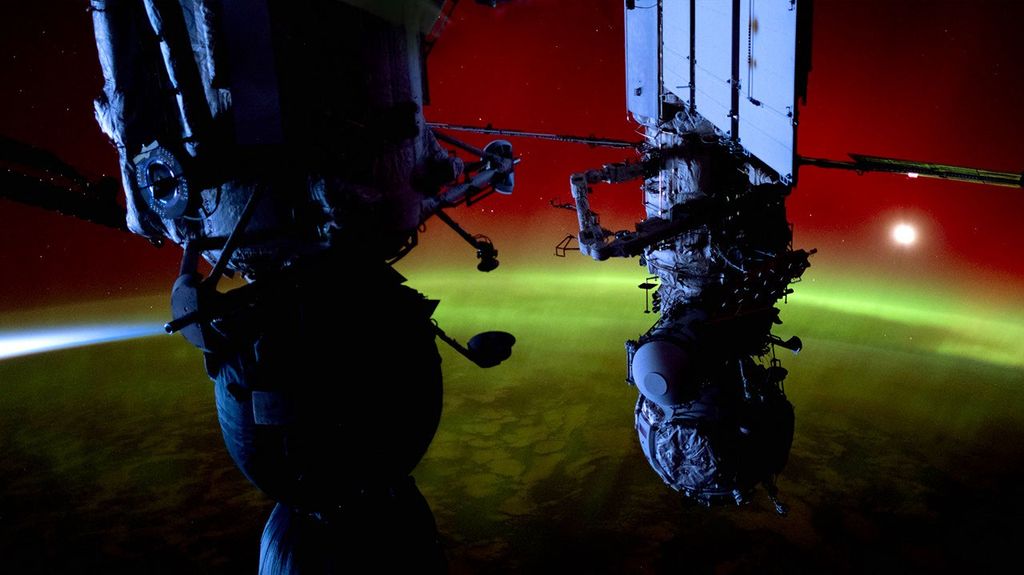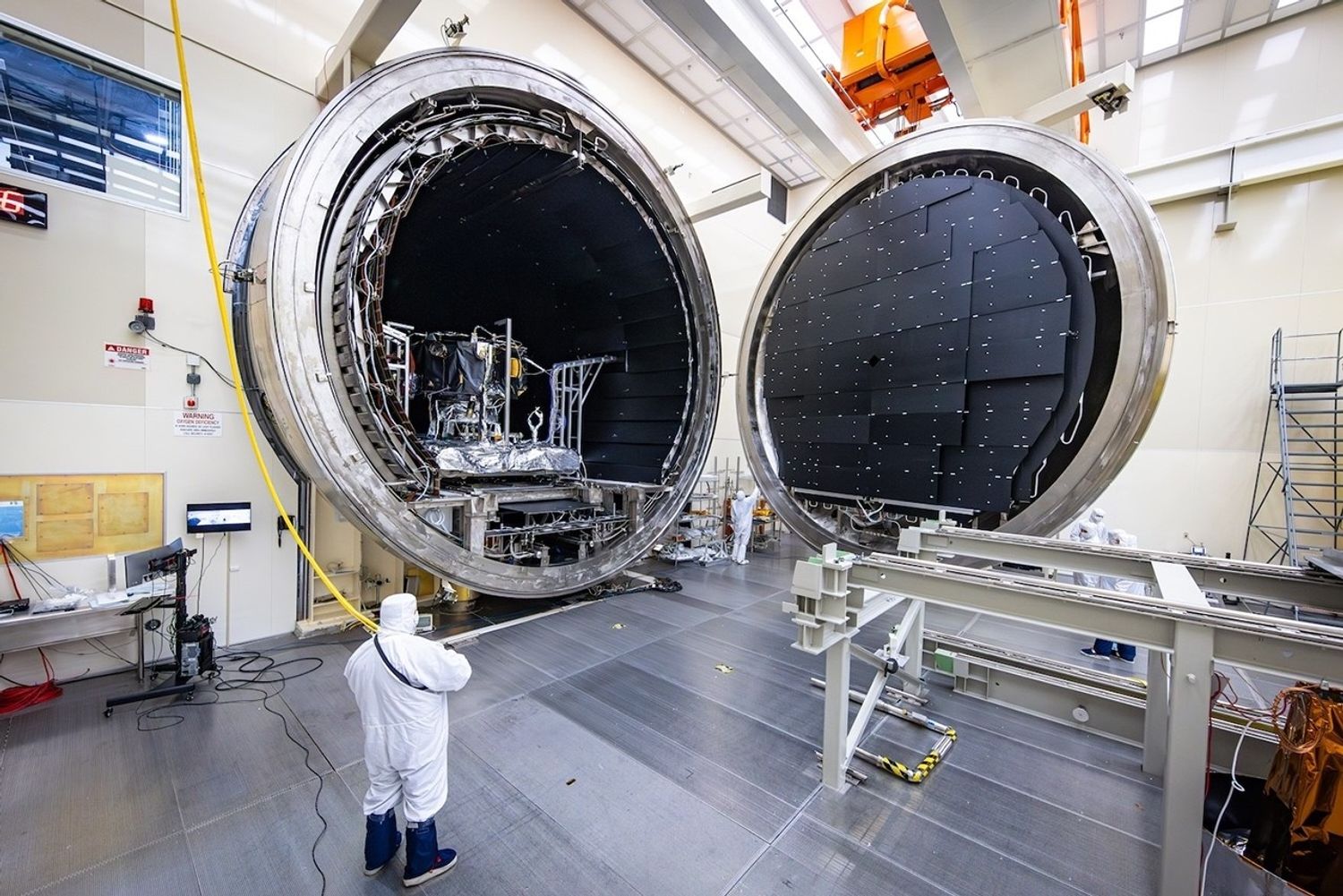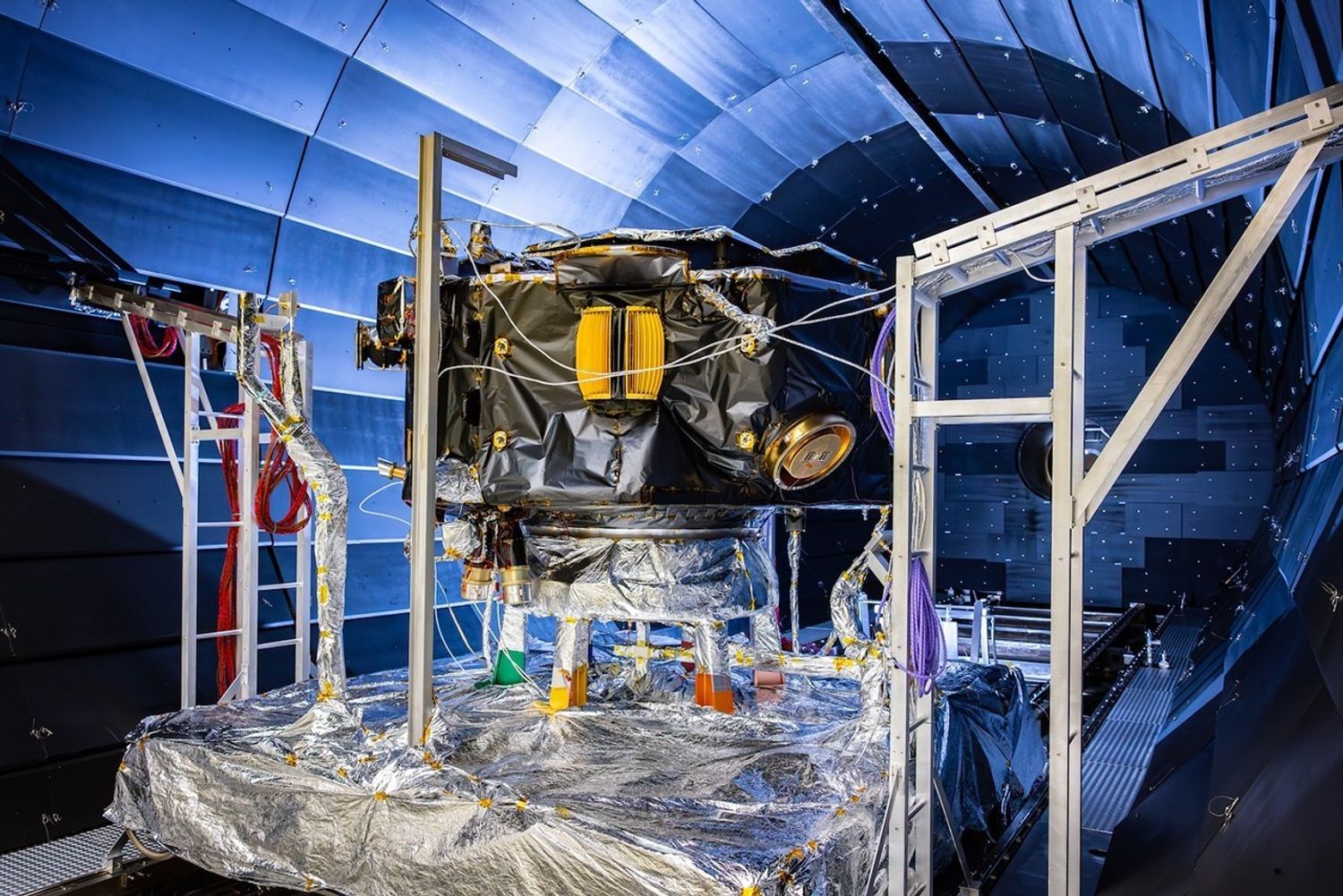NASA’s IMAP Completes Thermal Vacuum Testing Campaign
NASA’s IMAP (Interstellar Mapping and Acceleration Probe) has successfully completed thermal vacuum testing at the agency’s Marshall Space Flight Center in Huntsville, Alabama, as part of its journey toward launch as soon as this fall. As a modern-day celestial cartographer, IMAP will help researchers better understand the boundary of the heliosphere, a sort of magnetic bubble surrounding and protecting our solar system.
Thermal vacuum testing is one of the major environmental tests completed before launch, consisting of two parts: thermal balance and thermal cycling.
Thermal balance tests the thermal design of the spacecraft to verify it works correctly. The IMAP mission underwent a series of hot and cold test cases during which the spacecraft is configured in a flight-like operating mode while the test chamber simulates corresponding conditions outside the spacecraft. For each case, the spacecraft stayed in this state for a day or more, allowing the IMAP team to observe the temperatures that the spacecraft settles out to and how its thermal design functions in these conditions, as well as compare that to predictions from the spacecraft’s thermal model.
Thermal cycling tested how IMAP will operate in both hot and cold conditions to verify that all hardware and software functions correctly. In both hot and cold conditions, IMAP went through several tests, including:
- Performance testing of all spacecraft subsystems and instruments.
- A week-long mission simulation where the mission operations team practices controlling the spacecraft from the mission operations center as they would in flight.
- Timekeeping testing to verify the onboard clock and timekeeping system are accurate at different temperatures.
- Radio frequency compatibility testing with NASA’s Deep Space Network.
In March, IMAP departed from the Johns Hopkins Applied Physics Laboratory in Laurel, Maryland, where engineers integrated IMAP’s instruments, subsystems, and components and ran them through a gauntlet of tests, including shock testing, to ensure mission success. With the completion of the thermal vacuum tests in April, IMAP has now passed all major instrument and spacecraft tests prior to launch. Next, IMAP will travel to the Astrotech Space Operations Facility near NASA’s Kennedy Space Center in Florida, where it will integrate with the launch vehicle and undergo final preparations ahead of launch.
The IMAP mission will study the heliosphere — the Sun’s magnetic bubble that shields our solar system — to better understand its protective boundary. With 10 instruments built by multiple organizations, the spacecraft will sample, analyze, and map energetic particles, cosmic rays, and the solar wind streaming toward Earth from the edges of interstellar space. It will also continually monitor space weather to protect human and robotic space explorers.
Princeton University Professor and Principal Investigator David J. McComas leads IMAP with an international team of more than 25 partner institutions. APL is managing the development phase and building the spacecraft and will operate the mission. The IMAP mission is the fifth mission in NASA’s Solar Terrestrial Probes (STP) Program portfolio. The Explorers and Heliophysics Projects Division at NASA’s Goddard Space Flight Center in Greenbelt, Maryland, manages the STP Program for the agency’s Heliophysics Division of NASA’s Science Mission Directorate.
By Brett Molina
Johns Hopkins University Applied Physics Laboratory





























